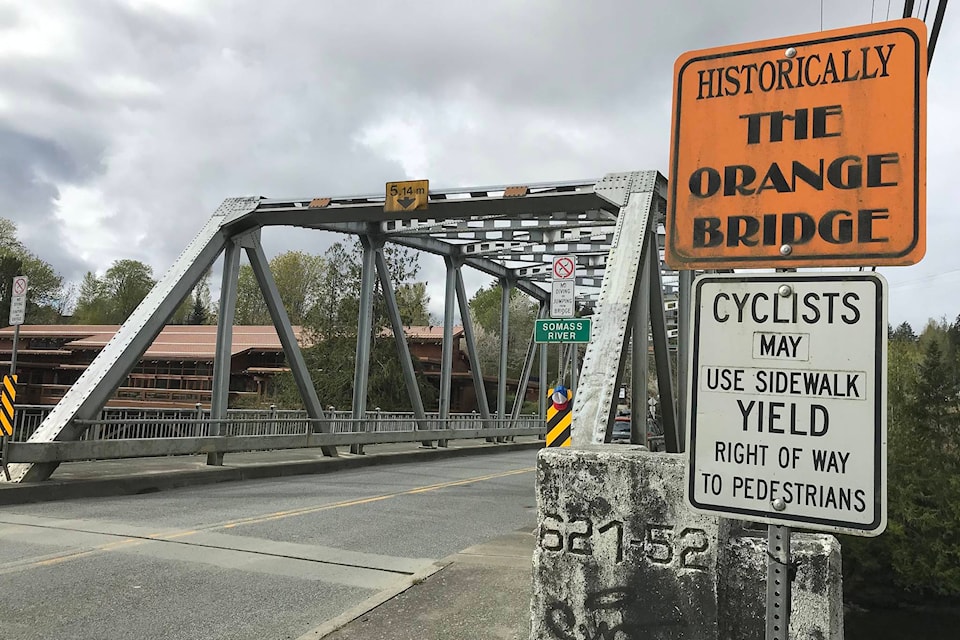How far back do you consider something to be historical?
When you’re talking about classic cars, it can be as recent as 25 years ago to qualify for a special collectors’ licence plate. With geneology, it can be two or three generations back.
For Pat Squire, history is at least 50 years and two paint jobs ago.
Squire lives in Nanaimo now, but he grew up in the Alberni Valley. He remembers the Riverbend Bridge that crosses the Somass River at Highway 4 and Falls Street as being silver, and questions why there is a sign saying it was “historically the Orange Bridge.”
“It was definitely silver in the beginning,” Squire said. People of his era—1950s and 1960s—referred to the bridge as the Silver Bridge, he said. He and some of his high school classmates remember the bridge, and were relieved when the orange paint disappeared.
The debate about the Orange Bridge isn’t new. The late Kristi Dobson, who wrote the Valley Heartbeat blog for Alberni.ca as well as community stories for both the AV Times and Alberni Valley News, put together a comprehensive historical piece on the bridge in October 2016, including a timeline of construction.
READ MORE: Why the Orange Bridge isn’t orange
The current steel truss bridge was only built in 1951; prior to that there were wooden structures dating back to 1890, when the first bridge was named Riverbend Bridge. For a number of years after that it was known colloquially as Thomson’s Bridge, according to Dobson, because James Thomson had purchased acreage at the river’s bend.
The bridge was only orange for a few years, after highways personnel discovered the orange paint faded and looked terrible when patched up, she wrote. In 1990 orange was no longer on the list of approved colours; many other bridges in the region had already been re-painted silver or grey, so officials went with that.
I vaguely remember the bridge being orange from trips to the west coast in the early to late 1980s. It has been silver since at least 1990, according to a couple of residents I asked. Although the bridge wasn’t orange for very long, its reputation of being orange has persisted for more than 30 years.
That’s why the sign calling it “historically” the Orange Bridge was finally erected.
The Riverbend bridge is silver now: putting up a sign saying it was “historically” the silver bridge would be redundant.
For Nuu-chah-nulth people, the Somass River holds more importance than any manmade structure crossing it.
“The river itself is the principle reason the Tseshaht First Nation and amalgamated tribes moved in and took over,” said Darrell Ross, senior manager of natural resources with the Tseshaht First Nation. “We call it our life blood.”
Most activities took place historically in the main village on the river, and that continues today, he explained. The Tseshaht administration building was built on the shores of the nation’s traditional fish harvesting area, right where the bridge in question is located.
“We cross it every day for our lifetime because we live by the river, but nobody ever discusses the colour of the bridge.”
— Susie Quinn is the Alberni Valley News editor.
(CORRECTION: Pat Squire lives in Nanaimo, not Ladysmith, as previously mentioned.)
